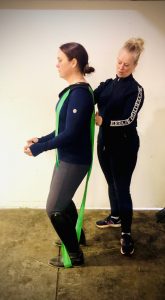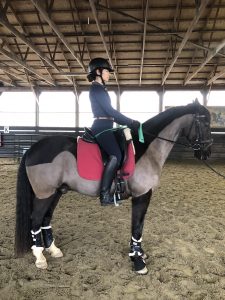
Blog Post #4 Part 2
Jan 12, 2024
Sandra Verda Zanatta
I decided to write an addition to my initial Blog Post #4 on Problem Solving after our meeting Thursday.
When I decided to take the plunge and apply for the HPCTL program, it was initially due to my goal of qualifying for the Pan Am Games coming to an abrupt end when my top competition horse was injured. I looked into the program previously, however, the timing did not work with my travel and competition schedule. The window of time became available, and being accepted into the program turned disappointment and derailment of my 2023 YTP into an opportunity for growth and challenge. I know without hesitation, that this is exactly what I am supposed to be doing right now. The problem to solve was how to find the hours in my week to commit to the course, and so my YTP revamping started!
Having been out of school for 25+ years, and as I have mentioned, not having the strongest technical computer skills, I felt like a fish out of water! It took a lot of extra time to learn programs correctly, I asked a lot of questions, used google extensively and called on some of you for help, I feel like I encountered a new problem everyday! I can say without a doubt I have not only learned a great deal in our classes, but definitely about computers!
The past year was a time to shift gears and regroup, figuring out how I wanted to adjust my professional path and help facilitate changes necessary within Canada’s equestrian industry. Across the board, we are facing significant challenges in rider and coach development, and producing high performance athletes with the ability to reach the podium. Working through the assignments has inspired me to look for innovative strategies to affect change. I recognize that as I present ideas, I will encounter resistance, so will need to be well-equipped and resilient, however, I believe that if logical pathways and potential solutions are brought forward, eventually, we can make positive steps towards the future. Listening all of you, the issues and struggles within your sports, and the solutions you have come up with, has provided me with ideas for different approaches to address the ones I am currently facing.
A great problem solver is my mentor is Ronan Byrne of Stronger Mind Counselling. Ronan holds his Masters in Clinical Counselling with a certification in trauma counselling. He has 28 years in working in Correctional Service of Canada, has represented Canada in Triathlon, played professional Rugby and is a 5 x Ironman Triathlete. Ronan has been a constant source of support, his guidance and input has been invaluable, providing an interesting perspective due to his diverse background. He challenges me to consider different approaches, dig deeper and think outside the box. We recently had an interesting meeting about the ability to problem solve under extreme stress and how to reign yourself back in, regain control and regulate your emotions so you can refocus and think critically. We discussed how anxiety is a key component required not only in sport but life, and it is healthy. The key is, can you relax and find solutions within it. I appreciated his perspective about nerves, tension, anxiety and how they are often viewed as negative when in reality they are very necessary and it’s about how you regulate and put them to use to improve performance. I gave a scenario using one of my athletes to brainstorm about potential strategies to improve her ability to regain emotional regulation quickly, within a competition setting. Giving her tactics to be effective, plan for the next movement, and to improve the rest of the performance. In general, teaching her how to regain composure and get back on track efficiently, a crucial skill in equestrian sport, as loss of focus, composure and regulation significantly affects human and horse athletic performance.
In closing, my journey in this course to date has exceeded my expectations, the camaraderie of our cohort, the guidance of the professors and the possibilities for the future have inspired and energized me. Thanks to all of you, I hope you all achieve your personal and professional goals.

 December 28, 2023
December 28, 2023